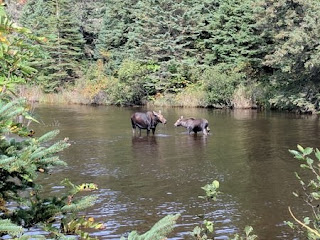Winter is my least favorite time to be outside. It's cold, dark, and precipitating. In fact, I'm expecting snow the day after tomorrow. It's a great time to grab a cup of tea and a good book. Here are some more suggestions for your reading pleasure.
Dolphin Diaries by Dr. Denise L. Herzing
Herzing spent a quarter century in the Bahamas, essentially living among the spotted dolphins, if only
during the summer. During her seasons there she was able to gain unprecedented access to their
behaviors, communications, and rituals. She was seemingly accepted into their society. This book
chronicles the amazing discoveries she made in her time with these fascinating creatures and will
challenge what you think about animal intelligence.
A Sting in the Tale by Dave Ghoulson
Learn about British bumblebees. Ghoulson recounts the history of bumblebees from their appearance
in natural history when dinosaurs roamed the Earth to their problems today. All this, of course, is
interspersed with his own humorous tales from a childhood fascinated with wildlife to his more recent
time in the field tracking down some elusive bees. Oh, and there’s pie.
The Invention of Nature, Alexander Von Humboldt's New World by Andrea Wulf
This biography of Humboldt explores his development from a dutiful son to the father of ecology, even
if the word didn’t yet exist. A contemporary of Darwin’s father, it was he who planted the seeds that
germinated into the theory of evolution. He even warned of human activities influencing the climate,
making him possibly the world's first environmentalist. We discover his intellectual, philosophical, and
artistic influences as well as tag along on his adventures around the world.
Winter World by Berndt Heinrich
Heinrich is an entomologist by trade, but his keen eye for observation makes him a great naturalist as
well. Part science, part personal narrative and drawing on his own research and observations, in this
book he takes us for a walk through Maine woods to see how critters from flies to bears survive the
brutal Down East winters.




